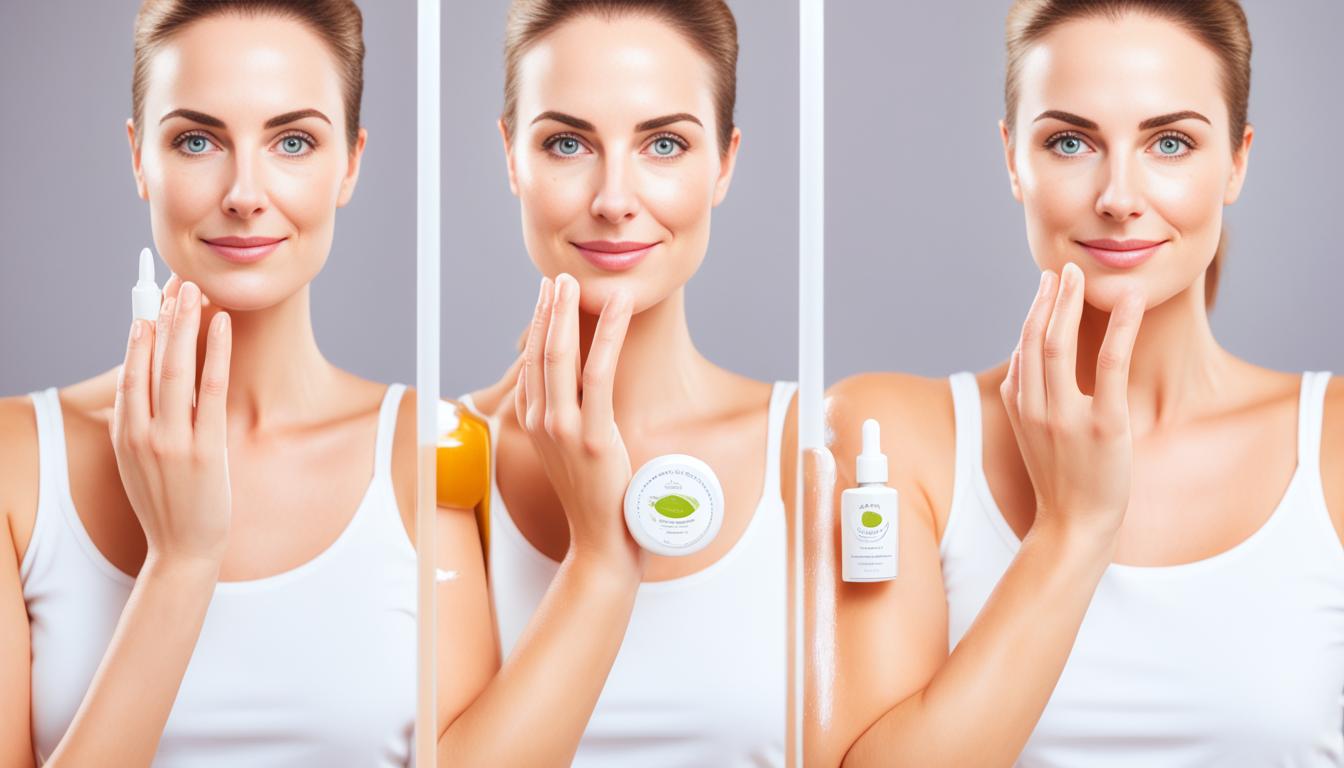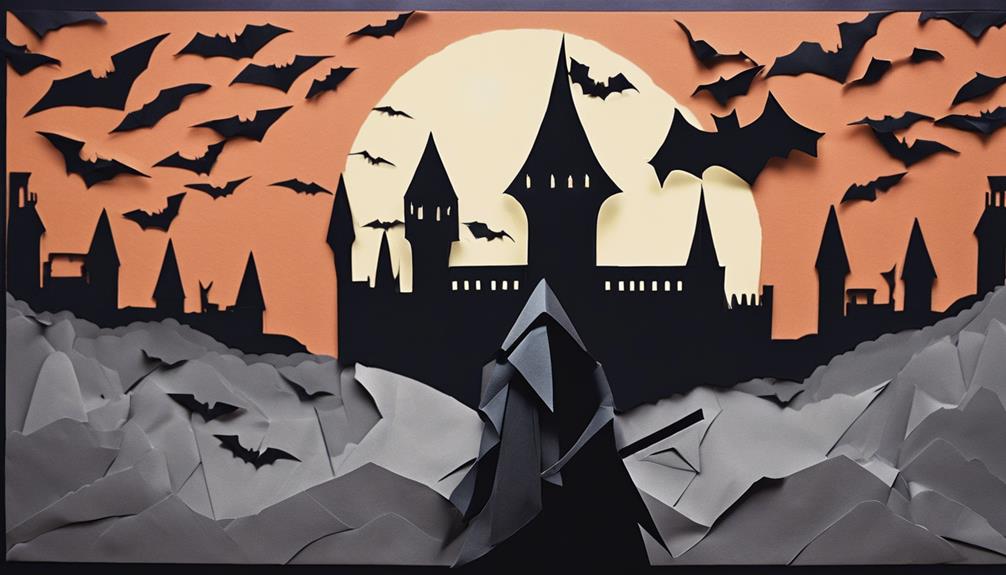Stretch marks are a common concern for many people. Whether you’ve experienced them during pregnancy, after sudden weight changes, or due to other factors, you know how they can impact your confidence. But have you ever wondered, is it possible to reduce the appearance of stretch marks? Are there effective ways to prevent them from occurring in the first place? In this comprehensive guide, we’ll explore everything you need to know about stretch marks, from their causes to treatment options and prevention tips.
Key Takeaways:
- Stretch marks are common scars that occur when the skin stretches or shrinks quickly.
- They can appear anywhere on the body and are most commonly seen during or after pregnancy or after sudden weight changes.
- While stretch marks are not harmful, they can be permanent, but over time, they may fade and change in appearance.
- There are various treatment options available for reducing the appearance of stretch marks, but complete elimination may not be possible.
- Preventive measures such as staying hydrated, maintaining a balanced diet, and regular exercise may help reduce the likelihood of developing stretch marks.
What Causes Stretch Marks?
Stretch marks occur due to a combination of factors that include skin stretching and an increase in the hormone cortisone. These marks are often more common during certain periods of life, such as puberty, pregnancy, rapid weight loss or gain, and weight training.
During puberty, growth spurts can cause the skin to stretch rapidly, leading to the formation of stretch marks. Similarly, pregnancy puts the skin under significant stretching and strain as the belly expands to accommodate the growing baby. The hormonal changes that occur during pregnancy, including elevated levels of cortisone, can also contribute to the development of stretch marks.
Another common cause of stretch marks is rapid weight loss or gain. When the body experiences significant weight fluctuations, the skin may not have enough time to adapt to the changes, resulting in the formation of stretch marks.
In addition to these factors, applying corticosteroids to the skin or having certain health conditions like Cushing’s syndrome or Marfan syndrome can increase the likelihood of developing stretch marks. Corticosteroids can weaken the elastic fibers in the skin, making it more susceptible to stretching and scarring. On the other hand, certain health conditions can affect the body’s ability to produce collagen and elastin, leading to a higher risk of stretch marks.
Genetics also play a role in the development of stretch marks. Some individuals may be more predisposed to develop stretch marks due to inherited characteristics such as skin color and texture, as well as the underlying structure of their connective tissues. People with lighter skin tones may notice stretch marks that appear as reddish or pinkish streaks, whereas those with darker skin tones may observe stretch marks that appear as lighter or darker lines.
In addition to genetics, skin elasticity plays a crucial role in determining the likelihood of stretch marks. If the skin is naturally less elastic, it may be more prone to developing stretch marks when exposed to rapid stretching or shrinking.
Understanding the causes of stretch marks can help individuals take preventive measures and seek appropriate treatments. In the following sections, we will explore the signs and symptoms of stretch marks, as well as various treatment options to help reduce their appearance and promote self-confidence.
Signs and Symptoms of Stretch Marks
Stretch marks can vary in length, width, and color. They often appear as indented lines or streaks on the skin and can range in color from purple to red to light gray or whitish, depending on your skin tone. Some people may experience itching and irritation before the stretch marks appear. When touched, stretch marks may feel slightly raised or have a ridge-like texture.
Visible Indicators
There are several signs that may indicate the presence of stretch marks:
- Indented lines or streaks on the skin
- Varying colors, such as purple, red, light gray, or whitish
- Texture changes, with the stretch marks feeling slightly raised or having a ridge-like texture
It’s important to note that stretch marks may not cause any physical discomfort, but some individuals may experience itching or irritation before their appearance. If you notice these symptoms along with the visual signs, it’s likely that you have stretch marks.
“Stretch marks often start as raised, reddish-purple lines on the skin. Over time, they may fade to a silvery-white color and become less noticeable. The appearance of stretch marks can vary widely between individuals, depending on factors such as skin tone, genetics, and the extent of the skin’s stretching.”
It’s worth mentioning that stretch marks commonly occur on areas of the body that have experienced rapid growth or stretching, such as the abdomen, breasts, thighs, hips, and buttocks. They can occur in both men and women, although they are more common in women due to pregnancy-related stretching.
Understanding the signs and symptoms of stretch marks is essential in recognizing and addressing their presence. If you suspect you have stretch marks or are experiencing any discomfort related to them, consult with a dermatologist or healthcare professional for a proper diagnosis and guidance on treatment options.
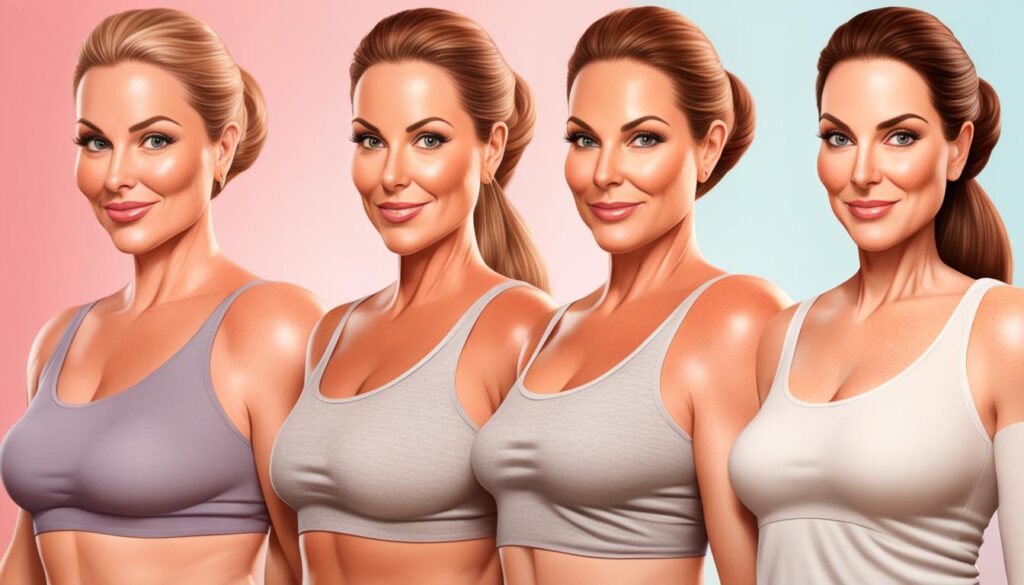
| Signs of Stretch Marks | Symptoms of Stretch Marks |
|---|---|
| Indented lines or streaks on the skin | Itching and irritation |
| Varying colors (purple, red, light gray, whiteness) | – |
| Texture changes (slightly raised or ridge-like) | – |
How to Get Rid of Stretch Marks
While there are many products and treatments that claim to reduce the appearance of stretch marks, there is limited evidence to support their effectiveness. However, there are some options that may offer some improvement in the appearance of stretch marks.
- Moisturizers: Regularly applying moisturizers can help keep the skin hydrated, improving its elasticity and potentially reducing the visibility of stretch marks.
- Self-tanning lotions: Using self-tanning lotions can help even out the skin tone and make stretch marks less noticeable.
- Prescription creams: Topical creams containing hyaluronic acid and tretinoin may help stimulate collagen production and improve the appearance of stretch marks, particularly in the early stages.
If over-the-counter options don’t provide the desired results, there are medical treatments that can be considered:
- Laser therapy: Laser treatments can help stimulate collagen production, reducing the appearance of stretch marks.
- Dermabrasion: This procedure involves removing the top layer of the skin, promoting new skin growth and potentially reducing the visibility of stretch marks.
- Microneedling: Using small needles to create tiny injuries in the skin can help stimulate collagen production and improve the appearance of stretch marks.
It’s important to note that these treatments cannot completely eliminate stretch marks, and individual results may vary. It’s always best to consult with a dermatologist to determine the most suitable treatment option for your specific case.
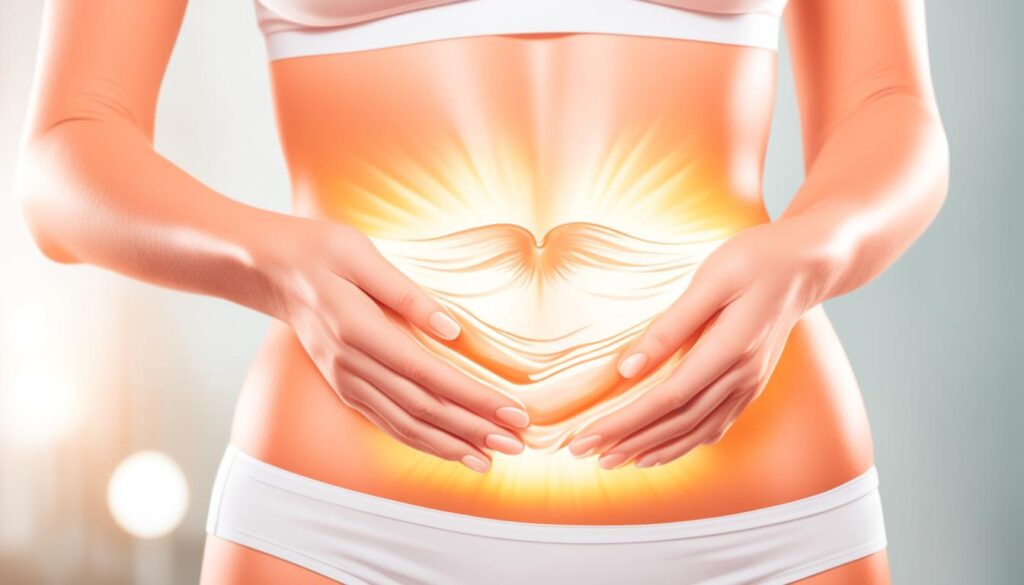
Expert Tip:
Dr. Emily Johnson, a dermatologist, suggests, “While there’s no foolproof way to get rid of stretch marks, a combination of moisturizers, topical creams, and medical treatments can help improve their appearance. It’s important to have realistic expectations and be consistent with the chosen treatment method.”
Professional Treatments for Stretch Marks
If you’re looking for more advanced options to reduce the appearance of stretch marks, professional treatments offered by dermatologists can be effective. These treatments aim to stimulate collagen production, improve skin color, and promote the growth of new skin.
Treatment Options
There are several professional treatments available for stretch marks:
| Treatment | Description |
|---|---|
| Tretinoin cream | A topical cream that helps to rebuild collagen and improve the texture of stretch marks. |
| Hyaluronic acid cream | A cream that hydrates the skin and improves its elasticity, reducing the appearance of stretch marks. |
| Pulsed dye laser therapy | A non-invasive laser treatment that targets the blood vessels in the stretch marks, reducing their color and visibility. |
| Fractional photothermolysis | A laser treatment that creates controlled micro-injuries in the skin to stimulate collagen production and improve the appearance of stretch marks. |
| Microdermabrasion | A procedure that exfoliates the outer layer of the skin, stimulating cell renewal and reducing the appearance of stretch marks. |
| Excimer laser therapy | A targeted laser treatment that stimulates melanin production, improving the color and texture of stretch marks. |
Each of these treatments has its own benefits and considerations. Consultation with a dermatologist is essential to determine the most suitable treatment option for your specific stretch marks.
Risks and Costs
It’s important to be aware that professional treatments for stretch marks may carry certain risks. For example, laser treatments can cause redness, swelling, or changes in skin pigmentation. Additionally, these treatments can be expensive, and the number of sessions required may vary depending on the severity of your stretch marks.
Therefore, it’s crucial to discuss the potential risks and costs with your dermatologist before undergoing any professional treatment.
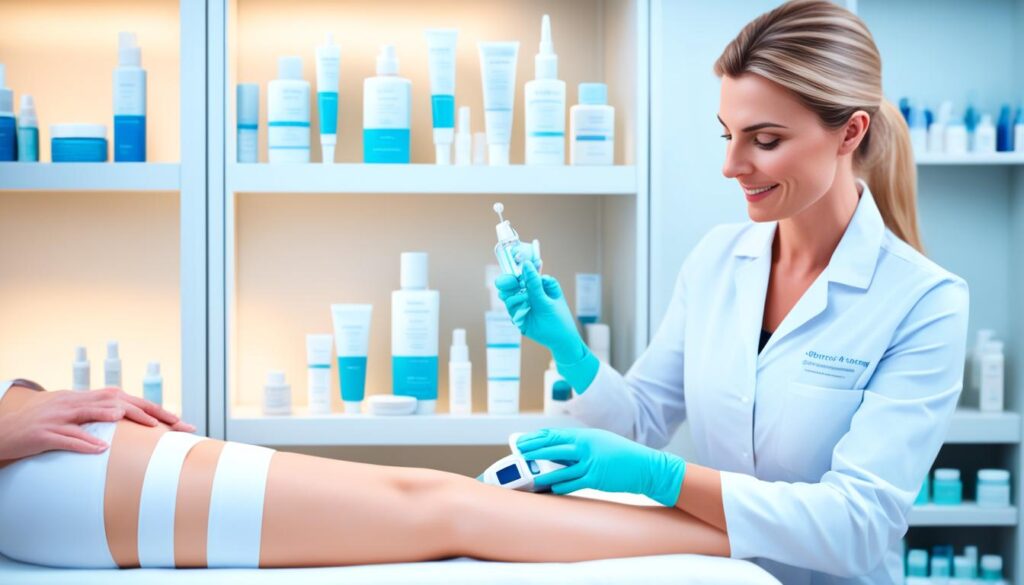
Can Stretch Marks be Prevented?
While it may not be possible to completely prevent stretch marks, there are some preventive measures that may help reduce their likelihood. Staying hydrated, maintaining a balanced diet, and regular exercise can help prevent stretch marks caused by rapid weight changes. If you’re pregnant, working with a dietitian and adopting healthy weight gain practices can also lower the risk of stretch marks. It’s important to remember that stretch marks are natural, common, and not harmful to your health, and there’s no foolproof way to prevent them.
However, there are some steps you can take to minimize the chances of developing stretch marks:
- Keep your skin well-hydrated: Drinking plenty of water helps maintain the elasticity and suppleness of your skin, reducing the likelihood of stretch marks. Aim for at least 8 glasses of water per day.
- Follow a balanced diet: A diet rich in vitamins A and C, zinc, and protein can support skin health and prevent stretch marks. Include foods like fruits, vegetables, lean proteins, and whole grains in your meals.
- Exercise regularly: Regular physical activity improves blood circulation, which can enhance the health and elasticity of your skin. Incorporate exercises that target the areas prone to stretch marks, such as your abdomen, thighs, and hips.
- Apply moisturizers: Keeping your skin moisturized can help maintain its flexibility and reduce the appearance of stretch marks. Choose products that contain hydrating ingredients like cocoa butter, shea butter, or almond oil.
It’s important to note that these preventive measures may not guarantee complete prevention, as stretch marks can be influenced by various factors such as genetics and hormonal changes. Remember to embrace your body and the changes it goes through, as stretch marks are a natural part of life.
Stay Hydrated
Drinking plenty of water is essential for maintaining the health and elasticity of your skin. Hydration helps to strengthen the skin’s supportive tissues and prevent the breakdown of collagen and elastin, which are responsible for keeping your skin smooth and supple.
“Staying hydrated can help maintain the elasticity and suppleness of your skin, reducing the likelihood of stretch marks.”
Maintain a Balanced Diet
A well-balanced diet rich in vitamins, minerals, and antioxidants can promote skin health and reduce the risk of stretch marks. Include foods like fruits, vegetables, whole grains, lean proteins, and healthy fats in your meals to support the proper functioning of your skin cells.
“A diet rich in vitamins A and C, zinc, and protein can support skin health and prevent stretch marks.”
Exercise Regularly
Regular exercise improves blood circulation, which can enhance the health and elasticity of your skin. Focus on exercises that target the areas prone to stretch marks, such as your abdomen, thighs, and hips. Incorporate a combination of cardiovascular exercises, strength training, and stretching for optimal results.
“Regular physical activity improves blood circulation, which can enhance the health and elasticity of your skin.”
Moisturize Your Skin
Keeping your skin well-moisturized can help maintain its flexibility and reduce the appearance of stretch marks. Look for moisturizers that contain hydrating ingredients like cocoa butter, shea butter, or almond oil. Apply them consistently to the areas prone to stretch marks, such as your belly, breasts, thighs, and hips.
“Keeping your skin moisturized can help maintain its flexibility and reduce the appearance of stretch marks.”
While these preventive measures may not completely prevent stretch marks, they can help minimize their occurrence and improve the overall health and appearance of your skin. Embrace your body and the changes it goes through, as stretch marks are a natural part of life.

How are Stretch Marks Diagnosed?
Diagnosing stretch marks primarily involves a visual examination by a dermatologist or healthcare professional. They will carefully inspect the skin to identify the characteristic appearance of stretch marks. During this evaluation, diagnose stretch marks will be based on their visual appearance, which usually includes indented lines or streaks that vary in length, width, and color. Stretch marks can range from purple to red to light gray or whitish, depending on the individual’s skin tone.
In addition to the visual examination, a dermatologist may also review your medical history to rule out any underlying health conditions that may have contributed to the development of stretch marks. This comprehensive approach helps ensure an accurate diagnosis and allows for a better understanding of your specific case.
In some cases, depending on the severity or suspected cause of stretch marks, the healthcare professional may recommend further tests. These tests could include blood, urine, or imaging tests to determine if there are any underlying health conditions or hormone imbalances contributing to the appearance of stretch marks.
If you have concerns about your stretch marks, or if you experience any unusual symptoms alongside them, it’s important to consult with a dermatologist. They can provide a proper diagnosis and offer guidance on effective treatment options for managing stretch marks.
Remember, while diagnosing stretch marks is important for understanding their cause and potential underlying conditions, it’s also essential to embrace self-acceptance and recognize that stretch marks are a natural part of many people’s bodies.
“Stretch marks can vary in appearance, and their diagnosis can be visual and may involve a review of your medical history. Consulting with a dermatologist can help confirm the diagnosis and provide guidance on effective treatment options.”
Common Techniques for Diagnosing Stretch Marks
Stretch mark diagnosis primarily relies on visual examination and patient history. Along with these approaches, dermatologists may employ additional techniques for a comprehensive diagnosis:
- Visual Inspection: Dermatologists visually examine the skin to identify characteristic signs of stretch marks, such as their appearance and location on the body.
- Medical History: A thorough review of your medical history can help identify any underlying conditions or factors contributing to the development of stretch marks.
- Additional Tests: In certain cases, the dermatologist may recommend blood, urine, or imaging tests to investigate potential underlying causes, such as hormonal imbalances.
By combining these techniques, dermatologists can accurately diagnose stretch marks and provide tailored treatment options based on individual circumstances.
| Diagnostic Techniques | Advantages | Limitations |
|---|---|---|
| Visual Inspection | – Non-invasive – Provides immediate results |
– Relies on professional expertise – Diagnosis subject to interpretation |
| Medical History Review | – Identifies potential underlying conditions – Provides context for treatment decisions |
– May require additional medical records – Limited by patient recall accuracy |
| Additional Tests | – Aids in identifying underlying causes or imbalances – Offers a comprehensive understanding of the condition |
– May involve additional costs – Requires specialized testing facilities |

When to Seek a Dermatologist’s Expertise
While dealing with stretch marks is a natural part of life, it’s important to seek the expertise of a dermatologist if you have any concerns or questions. Dermatologists are specially trained in skin care and can provide valuable guidance and support throughout your journey. They can offer professional advice on treatment options, address any underlying health conditions that may contribute to stretch marks, and provide personalized solutions tailored to your specific needs.
If you’ve tried home remedies or over-the-counter treatments without success, a dermatologist can offer more advanced treatments that may yield better results. By seeking their expertise, you can access the latest medical advancements and techniques designed to reduce the appearance of stretch marks and enhance your overall well-being.
Furthermore, dermatologists can provide emotional support for the emotional distress that stretch marks may cause. They can help you navigate any negative feelings and offer strategies to boost your self-confidence and body positivity. Remember, you’re not alone in this journey, and seeking the help of a dermatologist can make a significant difference in both your physical and emotional well-being.
When to consult a dermatologist:
- If your stretch marks cause itchiness or irritation.
- If you’re concerned about the appearance or color changes of your stretch marks.
- If home remedies or over-the-counter treatments have been ineffective.
- If you experience any unusual symptoms along with your stretch marks.
Don’t hesitate to schedule an appointment with a dermatologist who can offer the expertise, guidance, and support you need to manage and reduce the appearance of stretch marks.
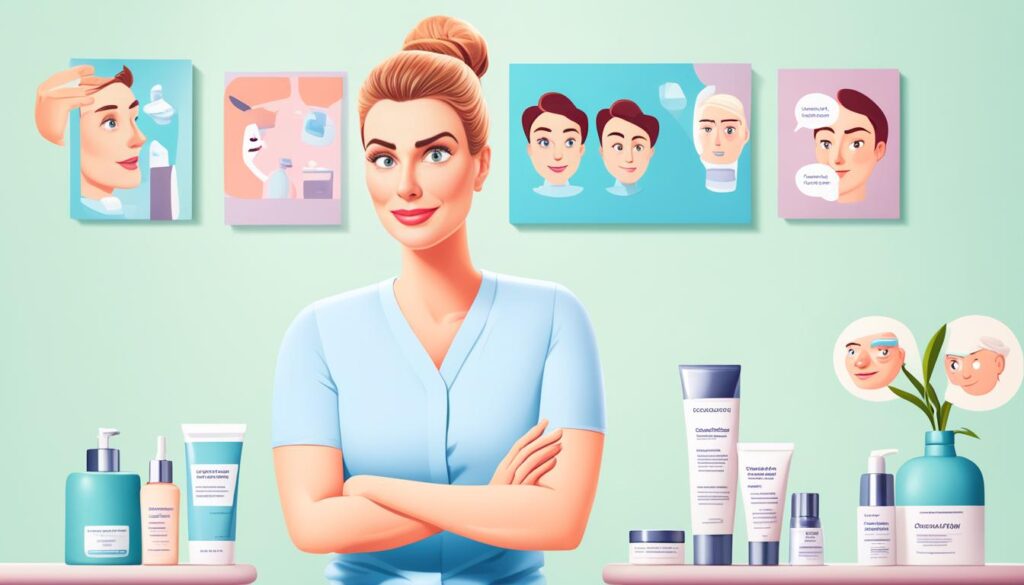
| Treatment Options | Benefits | Potential Risks |
|---|---|---|
| Tretinoin cream | Stimulates collagen production and improves skin texture | Skin irritation, redness, and dryness |
| Hyaluronic acid cream | Hydrates the skin and improves its elasticity | Potential allergic reactions |
| Pulsed dye laser therapy | Reduces redness and promotes collagen production | Possible bruising, swelling, or skin discoloration |
| Fractional photothermolysis | Improves skin texture and stimulates collagen production | Temporary redness, swelling, or itching |
| Microdermabrasion | Removes dead skin cells and stimulates collagen production | Possible redness, swelling, or skin sensitivity |
| Excimer laser therapy | Targets pigmentation and stimulates collagen production | Temporary skin redness or irritation |
Stretch Marks Treatment Options
When it comes to reducing the appearance of stretch marks, there are several treatment options available. Depending on your preferences and the severity of your stretch marks, you can choose from various approaches and techniques. These treatments aim to stimulate collagen production, improve skin texture, and fade the visibility of stretch marks.
Laser Skin Resurfacing
Laser skin resurfacing is a popular surgical procedure that can help minimize the appearance of stretch marks. It uses high-energy laser beams to target the affected skin, promoting collagen production and enhancing skin texture. Through this treatment, the laser helps reduce the redness or discoloration associated with stretch marks, making them less noticeable over time.
Dermabrasion
Dermabrasion is a procedure that involves the removal of the top layer of skin using a rotating brush or diamond wheel. This exfoliation process helps reveal fresh, new skin and can help reduce the appearance of stretch marks. Dermabrasion stimulates collagen production and encourages the growth of healthier skin cells, resulting in improved skin texture and reduced visibility of stretch marks.
Microneedling
Microneedling is a minimally invasive procedure that involves the use of tiny needles to create small puncture wounds on the skin’s surface. This process triggers the body’s natural healing response, promoting collagen and elastin production. By stimulating the production of these essential proteins, microneedling can improve the appearance of stretch marks and enhance skin texture.
“Laser skin resurfacing, dermabrasion, and microneedling are effective treatments for reducing the appearance of stretch marks.”
Aside from surgical procedures, there are also non-invasive treatment options that can provide improvement for stretch marks. Prescription retinol creams and topical treatments containing hyaluronic acid have shown promising results in reducing the visibility of stretch marks. These products work by increasing collagen production and improving skin elasticity.
In addition to professional treatments, there are various home remedies that may provide some benefits in reducing the appearance of stretch marks. Aloe vera gel, known for its soothing properties, can be applied topically to hydrate the skin and promote the fading of stretch marks. Centella asiatica herb, also known as gotu kola, has been used in traditional medicine to enhance wound healing and improve skin health. Applying hyaluronic acid, a moisturizing compound, can help improve the texture and appearance of stretch marks.
While these treatment options can offer improvement, it’s important to note that individual results may vary. Consulting with a dermatologist is essential to determine the most suitable treatment plan for your specific case. They can assess your skin condition, discuss your desired outcomes, and provide personalized recommendations.
| Treatment Option | Description |
|---|---|
| Laser Skin Resurfacing | High-energy laser beams stimulate collagen production and improve skin texture. |
| Dermabrasion | A rotating brush or diamond wheel removes the top layer of skin, revealing fresh, healthier skin cells. |
| Microneedling | Tiny needles create small puncture wounds that trigger the body’s natural healing response, promoting collagen production. |
| Prescription Retinol Creams | Topical creams containing retinol increase collagen production and improve skin elasticity. |
| Topical Hyaluronic Acid Treatments | Treatments containing hyaluronic acid moisturize the skin and improve the texture of stretch marks. |
It’s important to have realistic expectations when seeking treatment for stretch marks. While these options can provide improvement, complete eradication of stretch marks may not be possible. Embracing your body and practicing self-acceptance are essential in maintaining a positive body image.

Do Stretch Marks Go Away?
While stretch marks may cause concern, it is important to understand that they are considered permanent scars. However, over time, stretch marks may fade or become less noticeable on their own. The extent to which they disappear varies from person to person.
It’s important to have realistic expectations when it comes to managing stretch marks. While complete removal is not guaranteed, there are treatment options available that can help improve their appearance and reduce visibility.
Consulting with a dermatologist is the best approach to understanding the most effective treatments for your specific case. They can provide personalized recommendations based on your skin type, severity of stretch marks, and other factors.
It’s important to note that treatment outcomes can vary and that patience is key. Consistency in following a treatment plan and practicing proper skincare can yield the best results.
Preventing and minimizing stretch marks
While it may not be possible to completely prevent stretch marks, there are steps you can take to minimize their appearance:
- Maintain a healthy and balanced diet to support skin health and elasticity.
- Stay hydrated to promote overall skin health.
- Gradually gain or lose weight to minimize sudden stretching or shrinking of the skin.
- Use moisturizers and oils to keep the skin hydrated and supple.
- Protect the skin from excessive sun exposure, as UV rays can exacerbate the appearance of stretch marks.
Stretch marks may be a part of your body, but they don’t define your beauty. Embrace your skin and practice self-love.
Realistic expectations
Remember, each person’s skin is unique, and the effectiveness of treatment options can vary. While some individuals may see significant improvement in the appearance of their stretch marks, others may experience more subtle changes.
The ultimate goal is to feel confident and comfortable in your own skin, regardless of the presence of stretch marks. Celebrate the uniqueness of your body and practice self-acceptance.
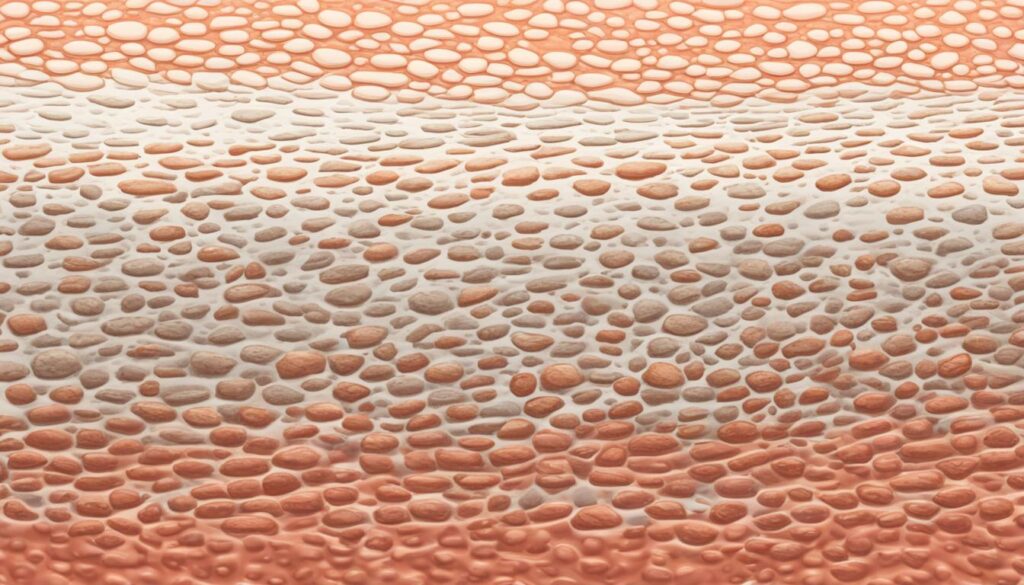
Home Remedies for Stretch Marks
While some home remedies like cocoa butter, coconut oil, and almond oil are often recommended for stretch marks, research suggests that they may not be effective in treating or preventing stretch marks. However, aloe vera gel, hyaluronic acid, and centella asiatica herb have shown potential in improving the appearance of stretch marks. Applying these products consistently and massaging them into the skin may yield some benefits.
While home remedies may offer some relief, it’s always advisable to consult with a healthcare professional or dermatologist before using any home remedies for stretch marks. They can provide personalized guidance and recommendations based on your specific situation. It’s important to note that the effectiveness of home remedies can vary from person to person, and results may not be guaranteed.
Natural Remedies for Stretch Marks
If you’re looking for natural remedies to try at home for stretch marks, consider incorporating the following into your skincare routine:
- Aloe vera gel: Aloe vera gel is known for its soothing properties and may help promote healing and reduce inflammation. Apply aloe vera gel directly onto the stretch marks and massage gently. Repeat this process daily for potential improvement.
- Hyaluronic acid: Hyaluronic acid is a naturally occurring substance in the body that helps retain moisture and plump the skin. Applying hyaluronic acid topically may help improve the appearance of stretch marks. Look for products that contain hyaluronic acid and follow the instructions for usage.
- Centella asiatica herb: Centella asiatica, also known as gotu kola, is an herb that has been traditionally used in skincare. It is believed to have anti-inflammatory and collagen-stimulating properties. Look for creams or oils containing centella asiatica and apply them to the affected areas regularly.
Remember, while these home remedies may offer some benefits, they may not completely eliminate stretch marks. It’s important to have realistic expectations and consult with a healthcare professional or dermatologist for personalized advice.

Conclusion
Stretch marks are a common occurrence and can affect anyone. While they are not harmful, they can cause emotional distress for some individuals. Fortunately, there are various treatment options available to reduce the appearance of stretch marks. From moisturizers and creams to professional treatments like laser therapy, there are choices to suit different needs and preferences.
However, it’s important to manage your expectations when it comes to treating stretch marks. Complete elimination may not be possible, but these treatments can help improve their appearance and reduce visibility. Consulting with a dermatologist is essential to receive personalized recommendations and guidance, as every individual’s case is unique.
It’s crucial to remember that stretch marks are a natural part of the body and should not be a source of shame or insecurity. Embracing your body and practicing self-acceptance is key. If stretch marks are causing you distress, seeking support from a dermatologist can provide both emotional and treatment options to help you feel more confident in your own skin.
